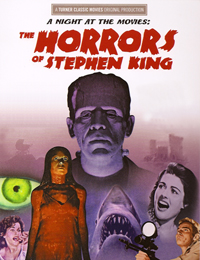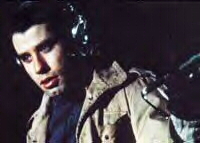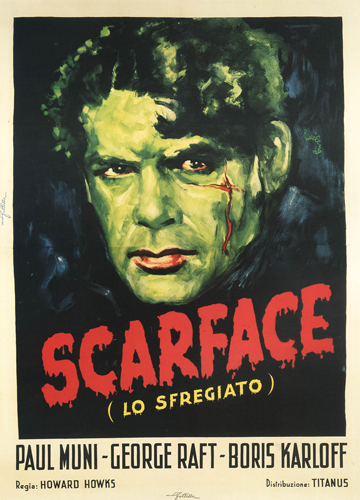BETTER LATE THAN NEVER
 No, That's not Brian De Palma pictured at left, but Ralph Fiennes, who, as Malene Arpe notes, "kinda looks like Brian De Palma." Fiennes was at the Toronto International Film Festival with his directorial debut, Coriolanus, which sets the play by William Shakespeare in contemporary Europe.
No, That's not Brian De Palma pictured at left, but Ralph Fiennes, who, as Malene Arpe notes, "kinda looks like Brian De Palma." Fiennes was at the Toronto International Film Festival with his directorial debut, Coriolanus, which sets the play by William Shakespeare in contemporary Europe.We don't know whether or not De Palma had a chance to catch that film while he was at the festival, but, thanks to various tweets and other posts online, we're aware of about a handful of screenings the director was spotted at last month. According to indieWIRE's Meredith Brody, De Palma attended a screening of Bruno Dumont’s Outside Satan on the first day of the festival (September 8th). Brody writes that the film, which she likes, is classic Dumont: "simple rural people in pastoral landscapes, interesting compositions, brutal sex, brutal violence, brutal religion." At the screening, Brody met up with Atom Egoyan and his wife, Arsinée Khanjian, and they all ran into De Palma outside the theater. Brody told De Palma that she was looking forward to seeing A Separation, but De Palma had to be at the Talent Lab later that night at the time of that screening.
Later into the festival, De Palma was spotted with his friend, filmmaker Noah Baumbach (who interviewed De Palma for Criterion’s recent Blow Out package) at a screening of Whit Stillman’s Damsels In Distress. On another day, De Palma was spotted at a screening of ”an Egyptian doc” that was most likely Tahrir 2011: The Good, The Bad and the Politician, a three part documentary that looks at the recent uprising in Egypt from the points of view of three Cairo-based filmmakers.
In his entry on Fandor’s TIFF wrap-up, Slant’s Simon Abrams wrote about seeing De Palma twice:
Seeing Brian De Palma (twice!) at the festival was frankly more thrilling than several of the films I saw at the festival. Seeing him seated just across the aisle from me at Dark Horse, Todd Solondz’s newest and maybe best film, was a delight. Mostly because I identify with Solondz’s latest to a freakish degree and think its a potent and deeply unnerving film. But also because I could look straight ahead and freak out one way and then look to my right and freak out another. Diversity rules.
De Palma was later spotted at a screening of Terence Davies’ The Deep Blue Sea. John R. Kennedy noted that “Fans outside Intercontinental on Front don't recognize iconic director Brian De Palma as he strolls past them.” Jesse Hawkin said it made his day when he got to “directly assist Brian De Palma.” Hawkin added, “Resisted the urge to thank him for all his great films.” And finally, the win for best tweet from the festival goes to Erik Childress, who wrote, “Earlier today saw Brian DePalma enter men's washroom and then exit immediately. Assume he saw no lesbians making out & just left.”
Updated: Saturday, October 15, 2011 12:00 PM CDT
Post Comment | Permalink | Share This Post




 Monday night at 8pm eastern,
Monday night at 8pm eastern, 

 Richard Hamilton, credited as one of the fathers of the "pop art" movement, died September 13th in England at age 89. In 1968, the same year that Hamilton created the iconic sleeve and poster insert for the Beatles "White Album," he appeared in Brian De Palma's Greetings, discussing one of his real-life works, "A Postal Card For Mother" (pictured at left), with the character played by Gerrit Graham (the film scene is pictured above). In "A Postal Card For Mother," a series of blow-ups of a beach scene are folded out accordion-like from the source photograph.
Richard Hamilton, credited as one of the fathers of the "pop art" movement, died September 13th in England at age 89. In 1968, the same year that Hamilton created the iconic sleeve and poster insert for the Beatles "White Album," he appeared in Brian De Palma's Greetings, discussing one of his real-life works, "A Postal Card For Mother" (pictured at left), with the character played by Gerrit Graham (the film scene is pictured above). In "A Postal Card For Mother," a series of blow-ups of a beach scene are folded out accordion-like from the source photograph.  It looks like that
It looks like that  Robert Loggia talked to
Robert Loggia talked to  Eric Charmelo, who created the new TV series Ringer with his regular co-writer Nicole Snyder, tells
Eric Charmelo, who created the new TV series Ringer with his regular co-writer Nicole Snyder, tells 
 News came late last night that Cliff Robertson died of natural causes Saturday (Sept 10), one day after his 88th birthday. Robertson, of course, portrayed the wealthy real estate developer Michael Courtland in Brian De Palma's Obsession, which was released 35 years ago in 1976. The film, written by Paul Schrader, was just released this past summer in a special region-free Blu-Ray edition from Arrow Video. In addition to winning an Oscar for his lead role in Charly in 1968, Robertson had a number of memorable roles in a long acting career. He played the CIA head in Sydney Pollack's conspiracy thriller Three Days Of The Condor, which was released a year before Obsession, and which provided much inspiration for De Palma's 1996 film Mission: Impossible (Condor has also been used as a comparison point for De Palma's upcoming project, The Key Man). In 1962, President John F. Kennedy personally chose Robertson to portray him in PT 109, which was based on Kennedy's experiences in WWII. More recently, Robertson became known as "Uncle Ben," the great beacon of responsibility in Sam Raimi's Spider-Man trilogy. Robertson also had run-ins with Batman, portraying the cowardly cowboy of crime, Shame, in several episodes of the TV series in 1966. In 1983, he portrayed Hugh Hefner in Bob Fosse's Star 80. Robertson also directed two films: J.W. Coop (1971, which Robertson also co-wrote and produced), has themes similar to that of De Palma's Carlito's Way. It stars Robertson as a cowboy who, after eight years in prison, finds that society is not what it used to be. The film is a western that takes place in the modern American rodeo circuit, and used footage from actual rodeo events. In 1980, Robertson directed The Pilot, a character study about a pilot who is also an alcoholic. Robert P. Davis adapted the screenplay from his own novel, and the film is noted for its realistic depictions of commercial flying.
News came late last night that Cliff Robertson died of natural causes Saturday (Sept 10), one day after his 88th birthday. Robertson, of course, portrayed the wealthy real estate developer Michael Courtland in Brian De Palma's Obsession, which was released 35 years ago in 1976. The film, written by Paul Schrader, was just released this past summer in a special region-free Blu-Ray edition from Arrow Video. In addition to winning an Oscar for his lead role in Charly in 1968, Robertson had a number of memorable roles in a long acting career. He played the CIA head in Sydney Pollack's conspiracy thriller Three Days Of The Condor, which was released a year before Obsession, and which provided much inspiration for De Palma's 1996 film Mission: Impossible (Condor has also been used as a comparison point for De Palma's upcoming project, The Key Man). In 1962, President John F. Kennedy personally chose Robertson to portray him in PT 109, which was based on Kennedy's experiences in WWII. More recently, Robertson became known as "Uncle Ben," the great beacon of responsibility in Sam Raimi's Spider-Man trilogy. Robertson also had run-ins with Batman, portraying the cowardly cowboy of crime, Shame, in several episodes of the TV series in 1966. In 1983, he portrayed Hugh Hefner in Bob Fosse's Star 80. Robertson also directed two films: J.W. Coop (1971, which Robertson also co-wrote and produced), has themes similar to that of De Palma's Carlito's Way. It stars Robertson as a cowboy who, after eight years in prison, finds that society is not what it used to be. The film is a western that takes place in the modern American rodeo circuit, and used footage from actual rodeo events. In 1980, Robertson directed The Pilot, a character study about a pilot who is also an alcoholic. Robert P. Davis adapted the screenplay from his own novel, and the film is noted for its realistic depictions of commercial flying.
